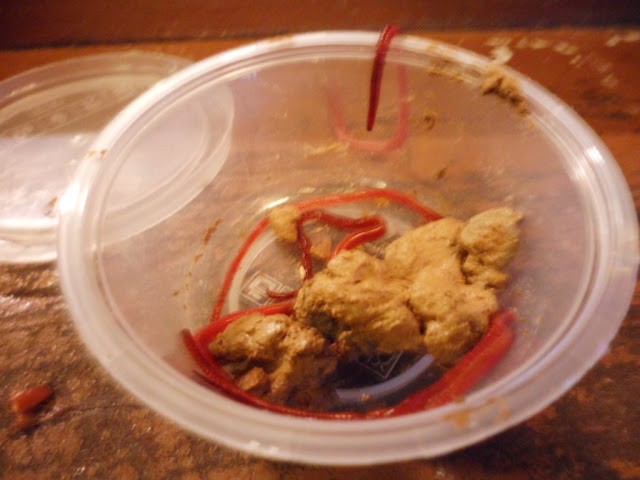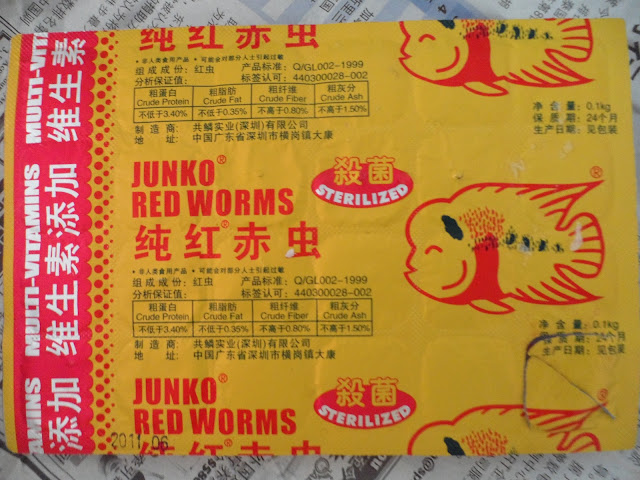Hello! I am excited to show you my new pet, a YABBIE! For those who are in my facebook already knew this.
But I shall elaborate more about how I got and how to rear it later.
Took a walk at Bugis 2 days back.
Bugis indeed have alot of people considering its on a weekday night.
After which, we went for Prawning over at Bishan!
After one hour at this pond, guess what's on the hook?
Of course a Yabbie! DBT told me it is a rare catch, so we waited for one hour not in vain.
The first thing that came from me was "I WANT TO KEEP IT!"
It is quite tiny actually. About the length of a hand measured from pincer to tail.
The ones (below) displayed at Hai Bin Prawning are much bigger and look fiercer. Mine has the cuter look! <3
I love pets.
I have had Guinea pigs and alot of hamsters as pets. They are the cute, warm, fuzzy and cuddly kind AND live on land. Hence, this is my first unique aqua pet (Yabbie) apart from my goldfishes and so I have zilch idea of how to rear it and giving it the best.
Did quite a bit of research online for the BASIC must-knows.
Apparently it is actually water cray fish. In the Eastern states, it is called yabbies and over in the west it is called marron. They can make good, low-maintenance pets as they can be kept in fish tanks (with lids) at home and only need to be fed every two days or so.
Some Basic Facts About Yabbie
1. Yabbies are found across most of Victoria, western New South Wales, south-western Queensland and eastern South Australia.
2. Yabbies moult (shed their shells to grow bigger), which can take up to 6 hours, depending on their size. During this time, they normally fast and stay in hiding. Some may even eat their shell.
3. Yabbies are hardy and can tolerate poor water conditions and long periods of drought by burrowing deep into the river bed to stay moist.
4. Yabbies range in colour from brown, green to pale blue.
5. It may moult many times in their lifetime, but as they got older they moult less.
6. It belong to a group called Crustacians and are arthropods which are invertebrates - that is, an aniimal without backbone.
7. Yabbies have a life span of 5-7 years under ideal conditions.
7. Yabbies have a life span of 5-7 years under ideal conditions.
(PS. Photo grabbed from Google)
Setting Up Home For Your Yabbie
1. Setting Up A Tank
It is pretty much similar to setting up a fish tank. But don't fill the tank with fresh water too high or your yabbie will crawl. Yes. I had mine crawling out and crawled its way across the room. If you must, place a lid over the tank. Take note of your air hoses, logs and rocks as it is a good climber.
2. Don't Overcrowd
Overcrowd and you can enjoy a free fighting show. I'm sure you would not want that to happen.
.3. Provide Hidey Holes and Gravels
You could throw in some short pipes or driftwood.
(PS. Photo grabbed from Google)
I placed a mug in instead for temporary use. I do not have all the necessary stuffs available when this Yabbie was caught but at least I tried to find alternatives. =)
I placed a mug in instead for temporary use. I do not have all the necessary stuffs available when this Yabbie was caught but at least I tried to find alternatives. =)
In nature, they love to burrow in the side of a bank or dam and that becomes their territory. Ensure that there's a heap of gravel in the base of the tank too as they do like to pretend to be a bulldozer.
4. Filter
Provide a filter as they are very messy eaters and waste a lot of food, so water can easily be contaminated.
Feed Your Yabbie
Yabbies are omnivores (eat both plants and meat).
From what I have gathered online, I don't see anything that Yabbies cant eat!
Apparently, you can feed it with prawn, peas, carrots, bloodworms, etc.
The important thing is to break the food up in small pieces and make sure it's eaten before you give the next piece.
I feed mine with Bloodworms. =)
Super value for money I tell you. 24 small cubes for $1 and my Yabbie did not even finish half a cube for 2 days.
The Do's
1. Small Aquarium Aerators
Do provide aerators if the tank is small. If your yabbie is small and the tank is large then it is ok. However, aerators are good as it not only place oxygen in the water for your yabbie to brathe, but also circulates the water and reduce the risk of pollution occurring in its tank.
2. Be Careful of What You Put In The Tank
Its little claws are notorious for catching things, you would not want your goldfish or expensive fishes getting caught or eaten by it. Don't you?
3. Put A Lid Over The Tank
Need I to say much?
The Dont's
1. Overfeed
Yabbie only eat a little food and if you place more than what it can eat into the tank, then the extra food just sits around and rots. Rotting food will pollute its water and kill it. Refer to "Feed Your Yabbie".
2. Holding It
Don't hold it in your hands as it tend to dry out and it is not good for it.
3. Disturb It While It Is Moulting
Yabbies are very vulnerable during moulting, they are sluggish and defenseless at ecdysis (shedding or casting off of an outer coat). They may get stuck trying to emerge from the old shell.
Don't disturb or handle an ecdysing Yabbie; they can't breathe at this stage and any delay means they run out of puff before finishing. Small ones ecdyse in a few minutes but very big ones can take 20 minutes, or longer.
A Yabbie on its side in shallow water is usually moulting, sometimes what you see is the old empty shell. If not, wait for a few minutes and you will see the 'new' Yabbie emerge.
4. Stress It or Grabbing Its Claws
When distressed, a Yabbie may loses it claws voluntarily. This is a mechanism whereby it is used to fend off predators. Usually, the claws will grow back during subsequent moultings but it may be smaller than its original claws.
4. Stress It or Grabbing Its Claws
When distressed, a Yabbie may loses it claws voluntarily. This is a mechanism whereby it is used to fend off predators. Usually, the claws will grow back during subsequent moultings but it may be smaller than its original claws.
What To Do If You Want To Add In New Yabbies To A Tank
Adding new Yabbies to a tank with existing Yabbies in it can be a problem.
Existing Yabbies will see the new Yabbies as invaders since the tank has become their territory and a massive fight will occur with death or injury.
What you can do is to remove the existing Yabbies from the tank and rearrange the stuffs (rocks, logs, sand, everything) in the tank. After you have done so, drop the Yabbies all in together. Old and new Yabbies are all now in new territory and they will settle in harmony with little fuss.
So, I have come to an end of "How To Rear Your Yabbie". Hope it helps.
Do share your experience with your Yabbie too. =)

































For feeding, what can be done is try not to give to much blood worm as it contaminates the water quite easily as well. Im giving my sink pellets which are good for the shell after motling. Once in awhile maybe you are able to give it some meat but not all the time as it will have the habit of eating meat instead of the sinking pellets or the vegetables that you throw down
ReplyDelete